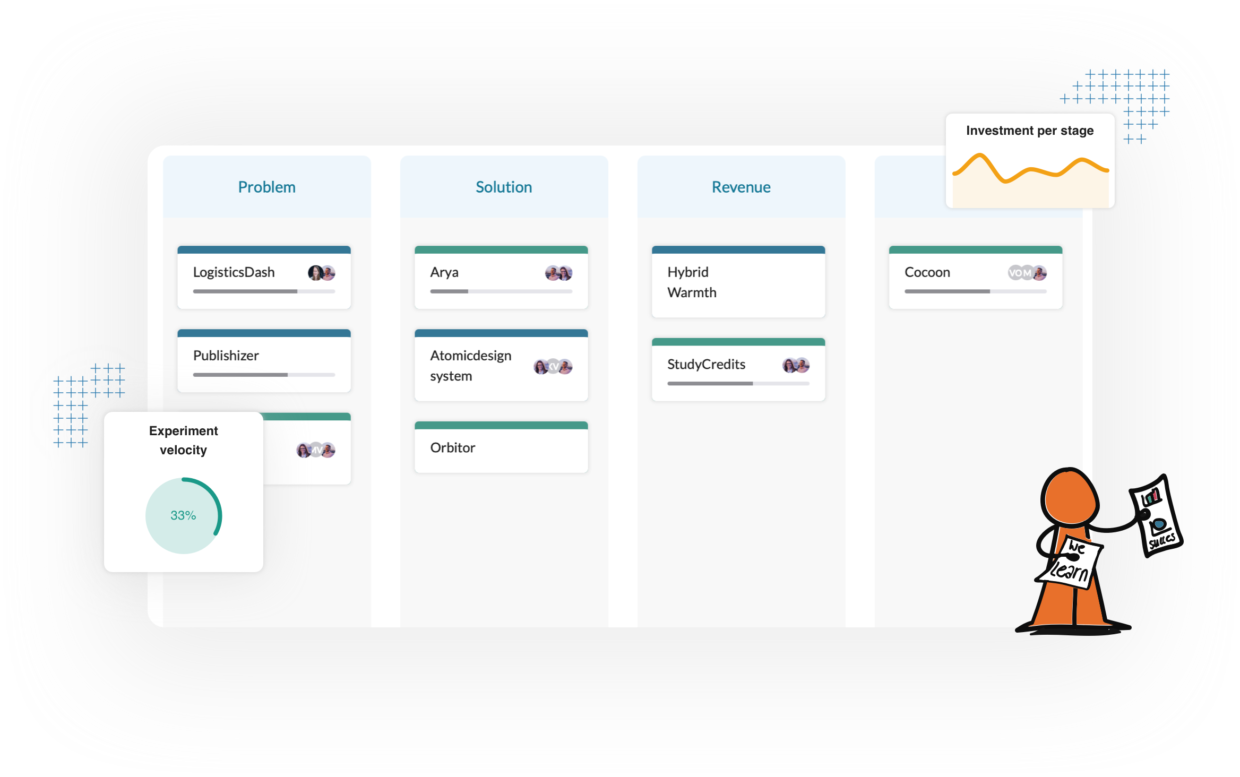How to measure that innovations are moving forward

We struggle to iterate quickly – I’d like to identify metrics to demonstrate that innovations are moving forward?
This challenge from the first Group Call at Innov8ers really caught my eye. It is a struggle that we’ve seen a lot with both our own startups and the corporate startup teams that we’ve coached over the years. Especially if the team does not have an active user-base or revenue stream yet, it is hard to see progress. The metrics we use in scaling, like annual revenue or daily active users do not apply.
One of the first things we did, now almost six years ago, was to start dividing our startups into different stages. We saw that startups go through the same 4 stages: First, prove there is a problem, then prove your solution solves that problem, prove your customer will pay and the hardest (and often overlooked) stage: prove you can scale.
The benefit for the startup team is that they know what to focus on and more importantly what to not focus on at the moment. Validating acquisition channels when you haven’t validated what your customer segment is doesn’t make a lot of sense, but is often done. We put these stages, along-side the stage relevant assumptions, together in our NEXT Canvas.
To show that innovations are moving forward, you can start tracking how long it takes for startups to go through each stage. You can setup stage gates to make that transition “smart” or even data-driven. For example by asking: “Has the team validated a clear problem for at least one customer segment?” or “Has the team validated a repeatable revenue model?“
This journey through the stages of a startup is however rather slow, compared to quicker iterations. To tackle that we started running innovation sprints with our teams. Sprints very similar to the Scrum sprints, determining what is currently most risky and how can we test that? We divide the tasks for that experiment between the team members and in the next 2 or 4 weeks, the team will execute that experiment. At the end of the sprint, we ask what the team has learned and how that affects their assumptions on the canvas. We then look at what is currently most risky, how can we test that, rinse and repeat.
[convertkit form=2588626]
This structured way of working makes it possible to start with innovation accounting by measuring how fast a startup is innovating. To do this we look at the number of experiments per quarter for example. We call that the experiment velocity. How well a team is innovating is measured via the learning ratio: The number of successful experiments, divided by the total number of experiments in a quarter. Fast-moving teams without any learnings are still failing.
After a month or two, you should already see which teams are working hard and which are learning fast. It will also become clear why some teams make more progress than others. When you have these team innovation metrics in place and make them actionable, you can continue by looking at how long each of your startup teams takes to progress through your gates.
Which stages and stage gates have you defined to measure progress?
Relevant links:
- Download: NEXT Canvas
- Article: 3 KPI’s to start with innovation accounting
- Article: 24 months to product/market fit
- Article: The best way to start with Innovation Accounting
[convertkit form=2602167]

Timan Rebel has over 20 years of experience as a startup founder and helps both independent and corporate startups find product/market fit. He has coached over 250+ startups in the past 12 years and is an expert in Lean Innovation and experiment design.
